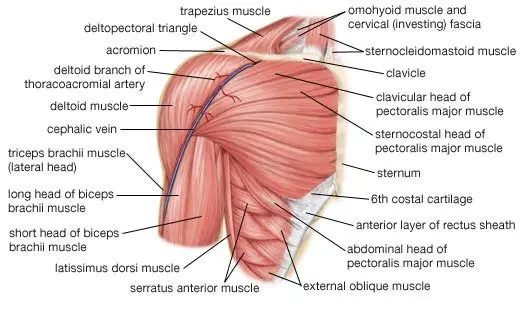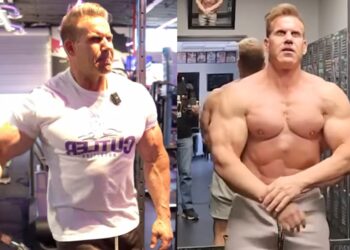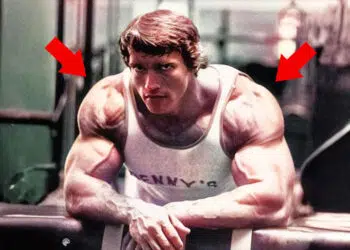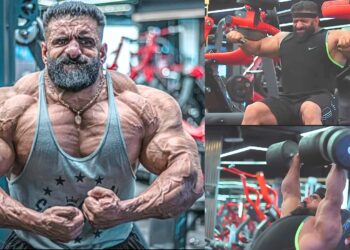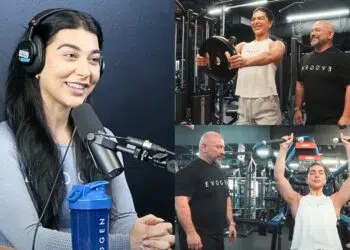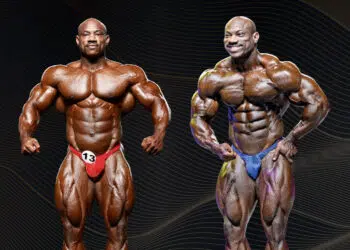Shoulder Training 101
The shoulder muscles (or deltoids) are a big part of the upper body, improving the shape and striations of the deltoid muscles is vital in the overall look of the upper body. In order to accomplish a good and aesthetically looking upper body a sufficient amount of shoulder muscle mass is needed.
Here in this article we’ll go over the anatomy of the shoulders, ways to improve the deltoids and give you some workout examples.
Let’s get started, first we’ll go over the basics and then go into more detail further on.
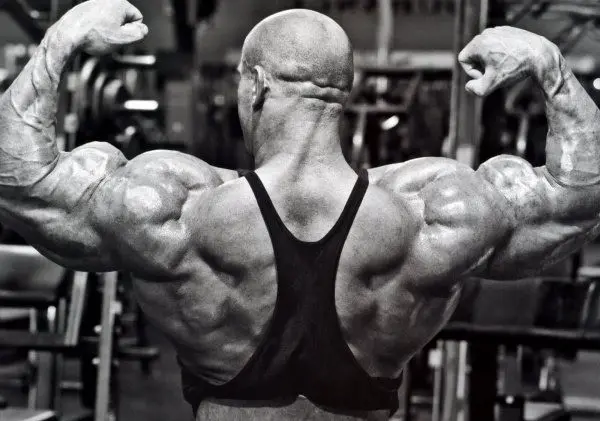
The Anatomy of the Shoulder:
First, we’re going over the anatomy of the shoulders, don’t worry it’s nothing too complicated and there isn’t too much to learn at this point. Understanding how the shoulders work will help aid with your mind to muscle connection and better visualization of shoulder workouts.
In regards to flexibility and movement the shoulder is the most versatile joint in the body, due to its nature it can be very unstable, it is basically a socket and ball joint. The head of the humerus is found at the ball of the shoulder, the socket portion of the shoulder joint is called the glenoid. On top of this is the acromion, this is where bone spurs can form. The acromioclavicular joint is found next to the acromion, which is more commonly known as the AC joint, this is the most common part of the joint for shoulder separation. Out of all the joints in the shoulder has the greatest range of motion and movement, due to its ball and socket type joint.
Level Up Your Fitness: Join our 💪 strong community in Fitness Volt Newsletter. Get daily inspiration, expert-backed workouts, nutrition tips, the latest in strength sports, and the support you need to reach your goals. Subscribe for free!
The shoulder contains three main muscles, these muscles, or heads as they’re commonly known, compromise of: anterior deltoid (front delts), lateral deltoid (middle delts) and posterior deltoid (rear delts).
The different parts of the shoulder:
Anterior deltoids (front head):
The front deltoid is found starting at the clavicle and is attached to the top of the tuberosity of the deltoid within the humerous. The anterior deltoid helps with shoulder abduction when the shoulder is situated with external rotation. In regards to transverse flexion, the anterior deltoid is weak but does offer some support to the pectorial major whilst there is shoulder transverse flexion.
Lateral deltoid (middle head):
The lateral deltoid is found at the acromion and it’s attached on the deltoid tubersosity of the humerous. The main function of the lateral deltoid is involvement in shoulder abduction and shoulder flexion when the shoulder is rotated internally. It is also involved with shoulder transverse abduction (this is when the shoulder is externally rotated), it has a small involvement in transverse extension (this is when the shoulder is internally rotated).
Posterior Deltoid (rear head):
This muscle would be found on the spine of the scapula, it inserts onto the humerous at the deltoid tuberosity. One of the rear deltoid’s main functions is involvement in transverse extensor. It has a great influence with transverse extensor, primarily because the latissimus dorsi struggles with strict transvere extension. The other main function of the rear delt is to extend the shoulder beyond an anatomical position (hyperextension) as the latissimus dorsi nor the pectoralis major can perform such a movement.
Rotator Cuff:
The rotator cuff is a main part of the shoulder; it is a group of muscles that help with overall overhead and rotational movements of the shoulder. This group of muscles are common for injuries, due to underuse or overuse. It is made up of: the infraspinatus, teres minor, supraspinatus and the subscapularis.
Different Shoulder Exercises
- Arnold Presses
- Cable Rear Delt Reverse Fly
- Cable Lateral Raises
- Dumbbell Lateral Raises
- Cable Front Raises
- Dumbbell Front Raises
- Barbell Front Raises
- Cable Upright Rows
- Dumbbell Upright Rows
- Barbell Upright Rows
- Dumbbell Shoulder Press
- Barbell Shoulder Press
- Military Presses
- Bent-Over Lateral Raises
Mass Building Shoulder Workouts
- Workout 1
- Cable Front Raises 3 x 8-12
- Cable Side Lateral Raises 3 x 8-12
- Cable Rear Delt Reverse Fly 3 x 8-12
- Arnold Presses 3 x 8-12
- Workout 2
- Dumbbell Front Raises 3 x 8-12
- Cable Lateral Raises 3 x 8-12
- Cable Rear Delt Reverse Fly 3 x 8-12
- Barbell Shoulder Press 3 x 8-12
- Workout 3
- Cable Front Raises 3 x 8-12
- Dumbbell Side Lateral Raises 3 x 8-12
- Bent-Over Lateral Raises 3 x 8-12
- Arnold Presses 3 x 8-12
- Workout 4
- Barbell Front Raises 3 x 8-12
- Cable Lateral Raises 3 x 8-12
- Cable Rear Delt Reverse 3 x 8-12
- Military Presses 3 x 8-12
- Workout 5
- Dumbbell Front Raises 3 x 8-12
- Dumbbell Side Lateral Raises 3 x 8-12
- Bent-Over Latest Raises 3 x 8-12
- Dumbbell Shoulder Press 3 x 8-12
Flex Wheeler’s Shoulder Workout
Flex Wheeler is arguably the greatest bodybuilder of all-time. Here is one of the shoulder workouts that helped Flex Wheeler to develop his classic shoulders. Flex says:
“I prefer Smith machine presses to other kinds of presses because the bar is fixed in a groove so you can focus just on the delts.”
“Wide-grip upright rows are a favorite of Charles Glass [Wheeler’s old trainer]. They’re done for the side delts. They especially target this area when you do side laterals before upright rows [to pre-exhaust side delts].”
“Rear delts are so important in a bodybuilding show. They often separate the top guys from all the other guys by giving depth to your rear and side shots. The key to rear laterals is getting a strong contraction on every rep.”
Flex Wheeler Shoulder Workout:
- Smith machine shoulder presses 4 x 10-12
- Barbell front raises 3 x 10-12
- Seated side laterals 4 x 10-12
- Wide-grip upright rows 3 x 10-12
- Lying incline rear laterals 4 x 10-12
- Machine rear laterals 3 x 10-12
Conclusion
The main thing to concentrate on is proper form and technique, especially whilst doing shoulder workouts, the shoulders are used in almost every single upper body workout and also in some leg workouts, so it is important you use proper form and technique.
Concentrate on the mind to muscle connection and try to visualize the correct movement. If you can’t feel the workout hitting your shoulder then you are either using incorrect form and/or technique or the weight is too high for you.
The main thing I want you to remember is the advice on proper form and technique and to have fun in the gym!

